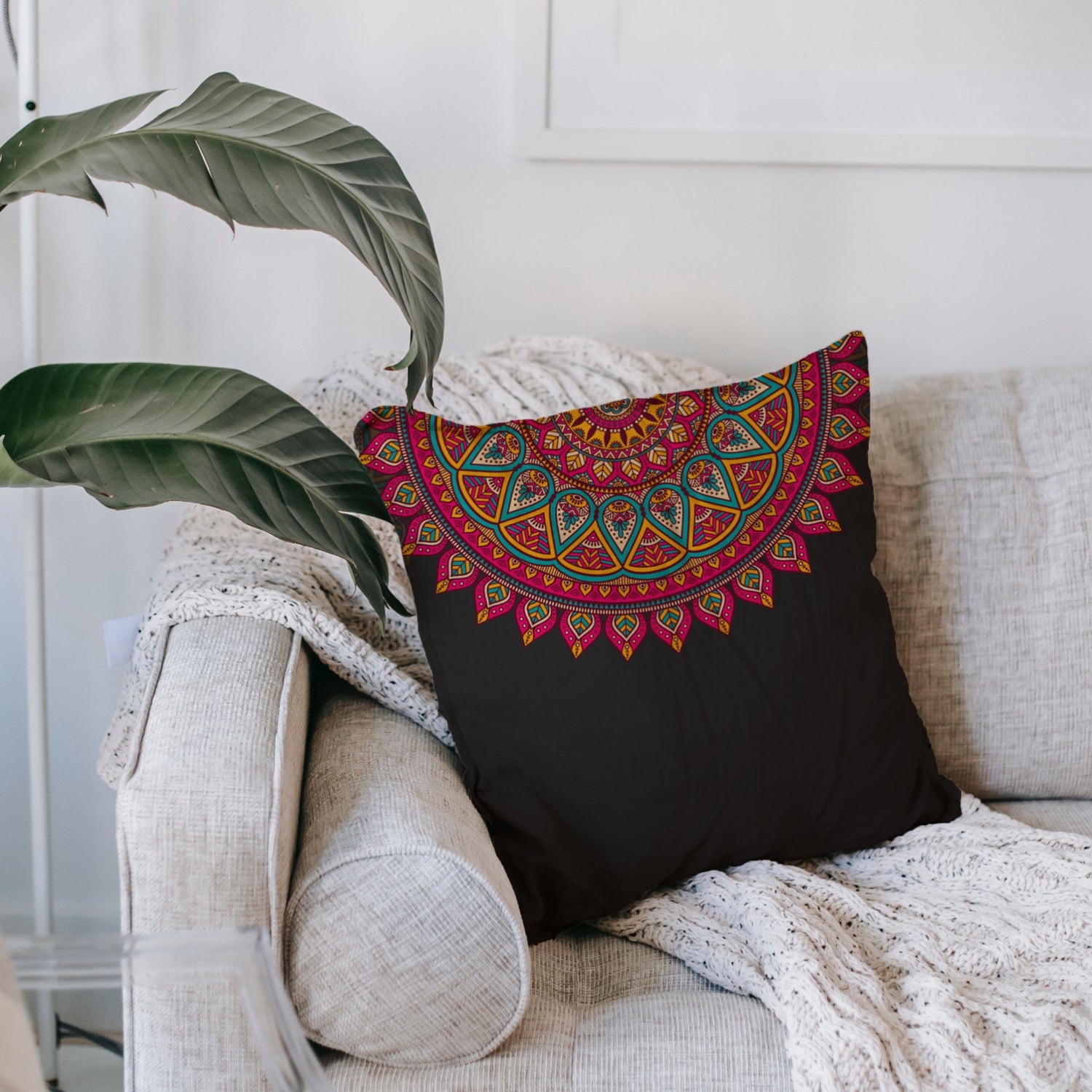The interaction of different patterns may give a space depth, personality, and visual intrigue while also reflecting your individual style.
However, establishing a pleasing balance between many patterns calls both serious thought and a thorough grasp of design concepts. In this article, we'll dig into the subject of pattern mixing and provide insights and advice to assist you in designing fashionable interiors that flow together and make an impression.
Use Contrast to Your Advantage
Creating contrast is a basic component of pattern mixing. A room is given life and attention through contrast, which makes the patterns stand out. Patterns should be combined with both colour and scale in mind. Choose color-contrasting designs, such as combining a strong geometric pattern with a softer organic one. To prevent the space from becoming too crowded, you should also change the scale of the designs. A nice visual rhythm can be produced by balancing a large-scale design with a smaller one.
Start With a Dominant Pattern
Pick a dominating pattern to start with before you combine patterns. The design of the room will be anchored by this. The largest and boldest design will probably be the dominating one, setting the tone for the entire area. For instance, if your couch is covered in a flowery pattern, you can decide to choose a more muted plaid or striped fabric as a secondary pattern.
Decide On a Colour Scheme
When combining patterns, a carefully considered colour scheme is essential. Select a restricted colour palette that is present in all the patterns in the space to achieve a unified aesthetic. Although not all designs must have the same colour, they should all have something in common. If you're unclear of what colours to use, think about utilising a colour wheel to find hues that are complimentary or similar to each other and blend well together.
Practice Using Pattern Scales
To avoid visual disorder, pattern scales need to be balanced. A room saturated with identical-scale patterns might be oppressive, whereas a space with too many different patterns can be confusing. Attempt to blend designs that are huge, medium, and small in scale. Put together a giant chevron rug, medium jacquard blinds, and small houndstooth throw cushions, for instance, This layering gives your interior space depth and dimension.
Aspect Pattern Types
Pay attention to the kinds of patterns you're utilising to prevent a pattern collision. Combining several kinds may provide a unified but intriguing appearance. Think of combining patterns that are organic, geometric, and abstract. This contrast of aesthetics will hold the viewer's attention without creating visual disarray.
Make Resting Points Out of Solid Colours
It's crucial to offer visual resting spots throughout the pattern play. As a divider between patterned pieces, you can use neutrals, textures, or neutral-colored solids. These rest areas let the eyes unwind and keep the space from being too crowded. To provide a feeling of equilibrium, add solid-colored furniture, like a sofa or chairs in a neutral colour.
Play Around With Textures
In terms of interior design, texture may have an influence comparable to that of patterns. A place may gain depth and tactile appeal by combining various textures. Think of adding materials like velvety carpets, silky drapes, and grippy tweed furniture. These textures may enhance and accentuate the patterns, adding to the design's multidimensionality.
Keep an Eye On Proportion
A visually appealing interior is mostly the result of proportion. Make sure the proportion of one design in respect to the others is balanced when combining patterns. For instance, if one wall is decorated with a huge design, balance it out with smaller patterns placed in other parts of the space. This balance makes sure that no one pattern dominates the area.
Test Before Committing
Make a mock-up or mood board before committing totally to a pattern mix. Collect fabric swatches, pictures of furniture, and examples of the designs you want to utilise. To see how they work together, arrange them together. Prior to applying your design to your environment, this phase enables you to polish it and make changes.
Trust Your Gut Feelings
While there are certain general rules, mixing patterns cannot be standardised. Embrace your particular preferences and trust your intuition. A combination is probably going to work well if it strikes a chord with you. Don't be hesitant to try new things and take chances. Pattern mixing is beautiful since it encourages creativity, so embrace the process and enjoy yourself while doing it.
In conclusion, the skill of combining patterns may take your home design to new heights. You may design trendy and aesthetically pleasing interiors that express your own personality and style by embracing contrast, choosing a colour scheme that works well together, experimenting with texture, and paying attention to proportion. Always keep in mind that the secret to effective pattern mixing is striking a balance that appeals to your senses and the sight. So go ahead and start this creative journey to design visually stunning and undoubtedly fashionable rooms.
Here's Relevant Blog : The Psychology of Color: How to Choose the Perfect Palette for Your Home In Pakistan






